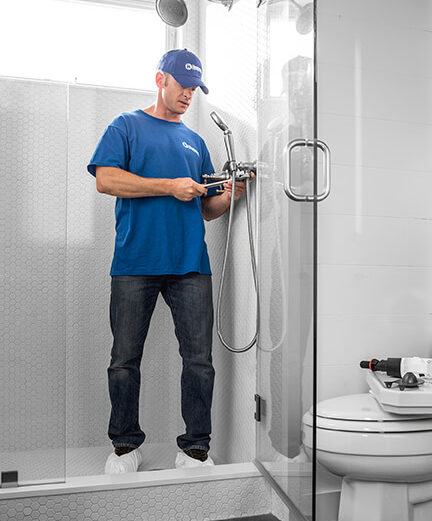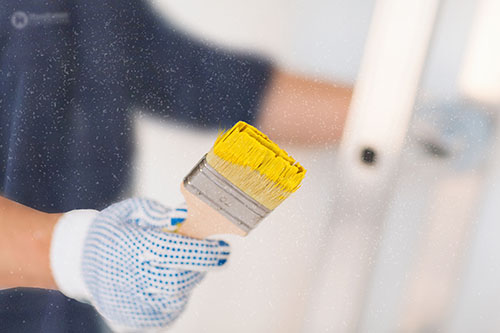We offer a wide range of services for that fresh look, or just maintenance or updates to keep your home functioning and safe. Regardless of the size of the job, we have a craftsman that can tackle it.

Home Improvement>Painting / November 13, 2015

Whether you want to update your home’s exterior with a new color or you’d like to harmonize your indoor living areas with a coordinated palette, a fresh coat of paint offers you an affordable way to freshen up your home. Painting can be a challenging DIY project, but when the job is completed skillfully, the results can make a world of difference when it comes to your home’s appearance. These seven painting tips from the pros at Handyman Connection of Boise can help ensure your success.
Colors are influenced by many factors, including the lighting and the surrounding furnishings, so don’t base your color choice on the strip chip you see in the store. It’s worth purchasing a few sample quantities of paint to try out at home. Pick up some foam core, the kind used as backing in picture framing, which you can paint to get a better sense of how the color will look in the space.
As a general rule of thumb, you’ll need to purchase one gallon of paint for every 400 square feet of space. Keep in mind that most paint jobs require two coats of paint. Subtract the surface area of windows and doors, but remember to factor in enough paint for trim such as molding and baseboards.
Even for a simple painting project, it takes a surprisingly large number of tools to get the job done. In addition to a ladder, brushes, rollers, protective tarps, buckets and tray liners, you’ll need tools to prep the surface for painting. These include sandpaper, sponges, patching compound, painter’s tape and primer. When painting indoors, breathing masks and safety goggles are advised as well.
Once you’ve secured your protective tarps with painter’s tape, start your preparation by making sure that the painting surface is clean and dry. The next step is to sand the surface so that the paint can take hold. You also may need to scrape away bumps or patch holes and apply caulk to gaps to even out the surface. Work from the top down to help keep dust at bay.
Be wary of overloading your brush when dipping it into a bucket of paint. Cover no more than half of the bristles with paint, and then tap the end gently against each side of the bucket to remove any excess. Alternately, you can tap one side of the brush, turn the brush, and then tap again on the same side. This technique lets you confine any drips to one side of the pot.
When painting walls, it’s tempting to tackle the wide open areas first, but your cutlines will be sharper if you start with the trim. This also allows you to cover up any mistakes when painting the walls. After painting the woodwork, cut a line of paint along the wall around an inch from the trim, turn the brush over, and then pull the brush up to the molding on the return stroke. Once your cutlines are established, you can use a roller to paint the rest of the wall surface.
If you’d love to paint your home but don’t want the hassle of doing the job yourself, the experts at Handyman Connection of Boise are readily available to handle the project for you. You’ll enjoy the quality results of a professional paint job, backed by our written guarantee. To learn more or to request a free, no-obligation estimate, call Handyman Connection of Boise today!